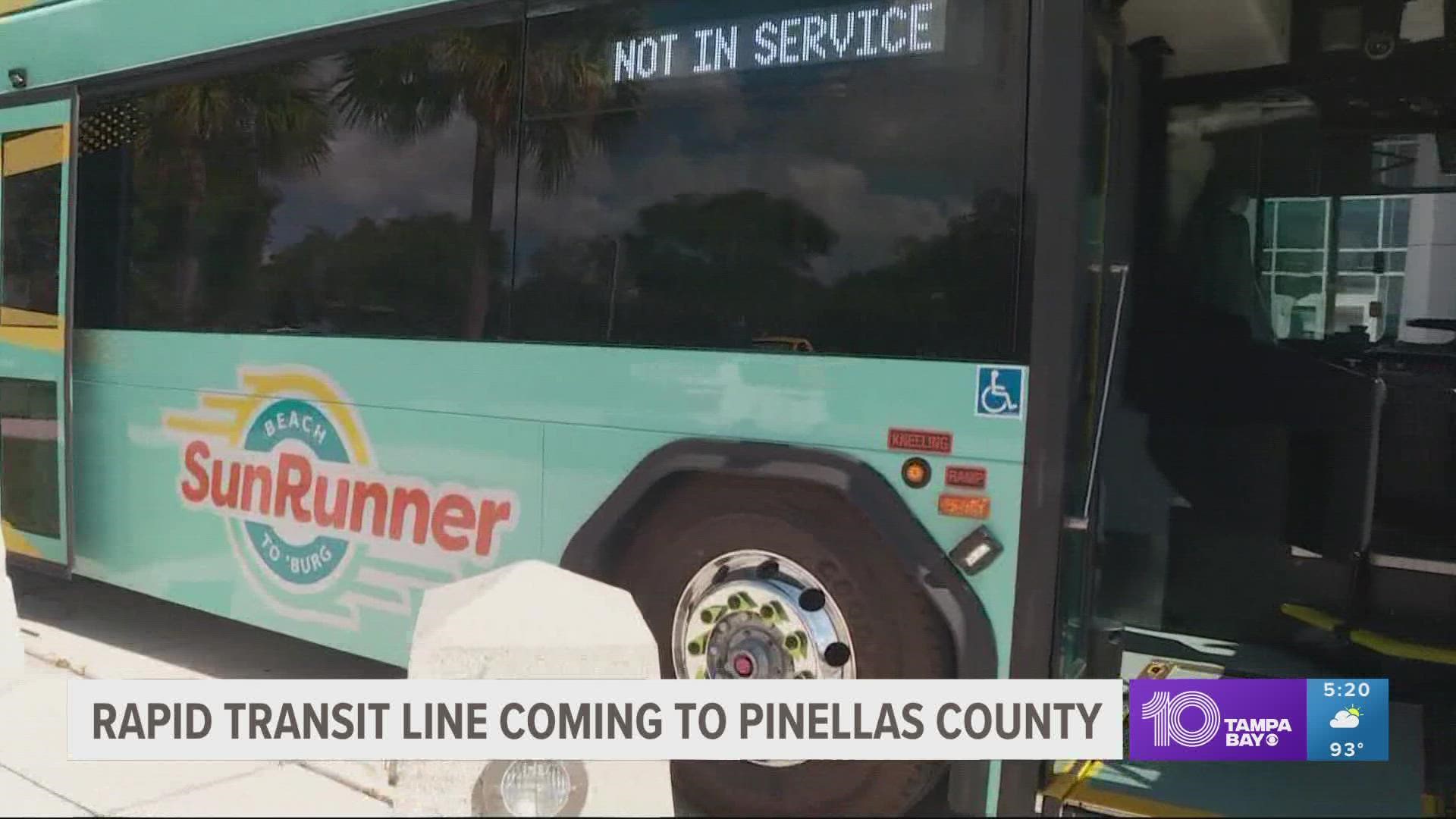ST. PETERSBURG, Fla. — The Tampa Bay area's first bus rapid transit system is coming to St. Pete Oct. 21, allowing riders to travel from "Beach to 'Burg."
The grand opening was revealed Wednesday by Pinellas Suncoast Transit Authority CEO Brad Miller who was joined by other members of the PSTA board, including County Commissioner Pat Gerard.
"It's been decades of effort," Miller said. "We are very excited to have a rapid transit line that will dramatically improve public transportation across the entire Tampa Bay."
The SunRunner offers a 10.3 mile line of faster transportation running from St. Petersburg to St. Pete Beach.
"We're the biggest metropolitan area in the country that does not have transit," Gerard said. "So this is a big deal. This is a start."
This new transit system will have 30 stations with buses running every 15 minutes during the day and every 30 minutes in the evening.
It will create a new transportation option for locals and tourists alike, boost economic development by increasing foot traffic to local businesses and streamline traffic movement.
The PSTA site says the BRT will also have environmental benefits like reducing harmful emissions and cutting demand for fuel and offshore drilling by providing a car-free option.
It works more like a train than a bus, Miller said, with stations and limited stops as well as painted, designated lanes throughout most of the corridor to improve speed.
"We think it will be a catalyst for other rapid transit lines that will be bringing forth throughout Pinellas County and the whole Tampa Bay area," he said.
Miller suggested there are early plans underway for creating BRT corridors stretching to the St. Pete-Clearwater International Airport, Hillsborough, Manatee and Pasco Counties.
A turquoise SunRunner bus with a bright, smiling sun across the side was showcased behind Miller.
The vehicle has multiple doors that open when it pulls into a station, and riders can choose any to enter or exit off of. The station's level boarding platforms allow for those who use mobility devices like wheelchairs to roll right onto the bus.
The interior allows for bikes to be brought onto the bus rather than being fastened to the front.
Riders can pay using the Flamingo app or a Flamingo card that can be purchased at retail outlets. Retail establishments at every stop are in the works, Miller said.
For the first six months of operation, the BRT will be free for riders. Then, it will cost the standard PSTA fare of $2.25 per ride.

